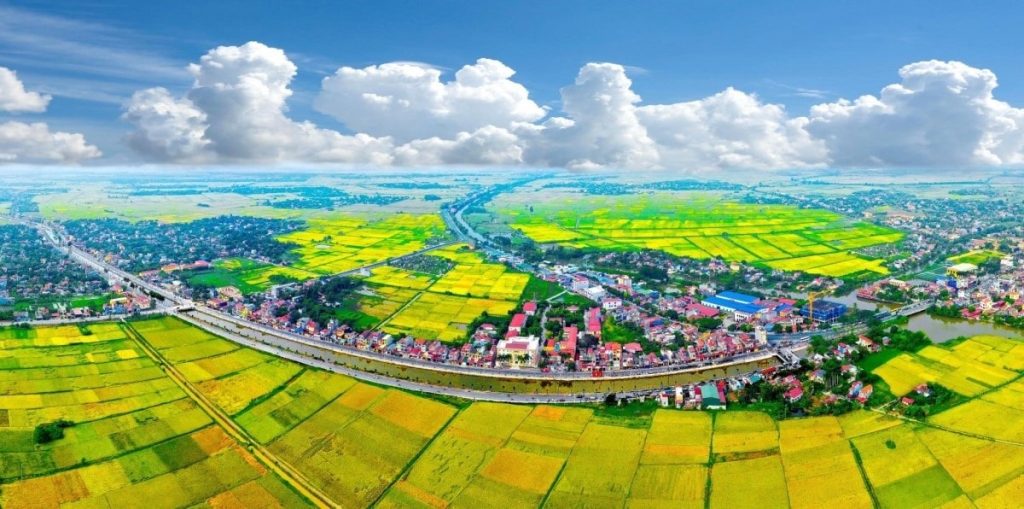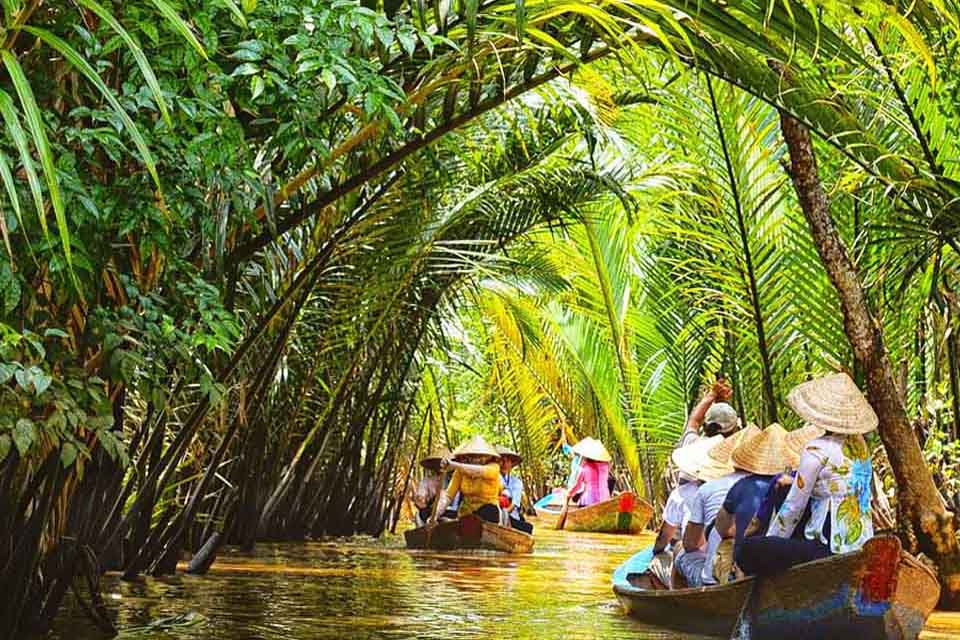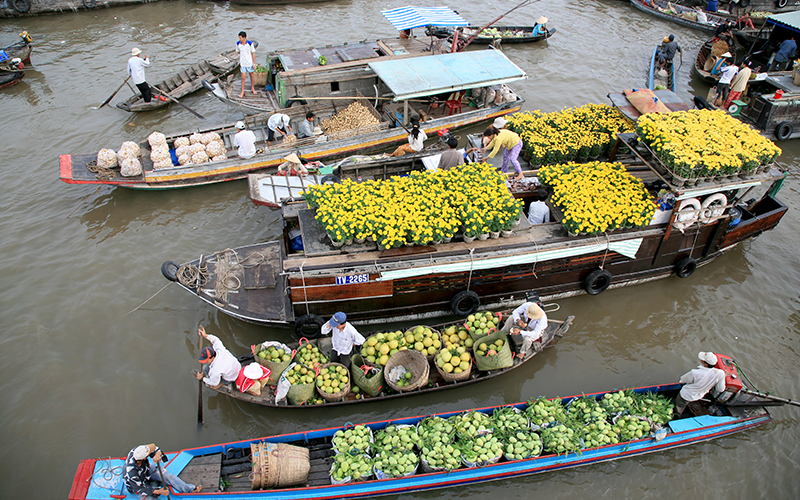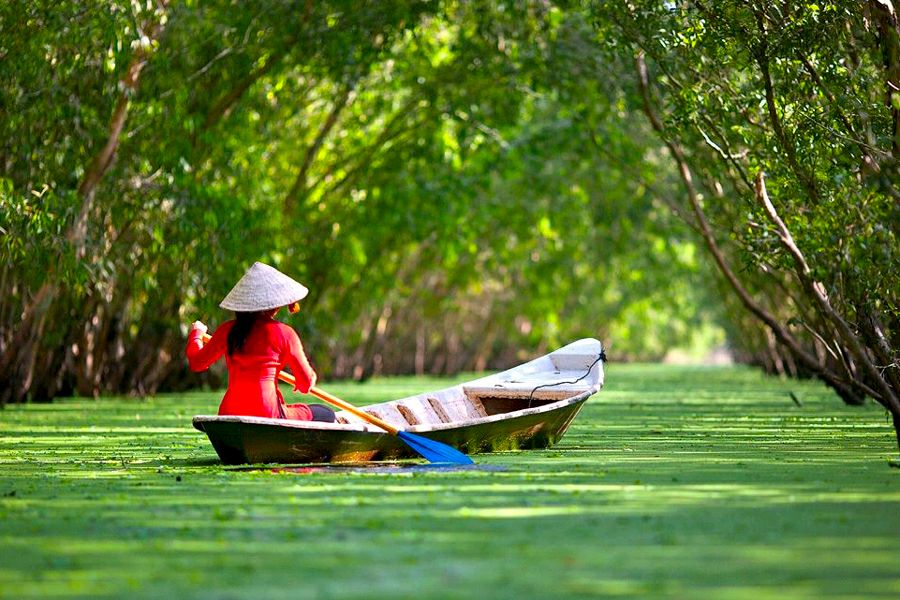Mekong Delta - A must-see trip to Vietnam
The Mekong Delta is a fascinating and culturally rich region located in the southernmost part of Vietnam. With its vast expanses of lush green rice fields, winding canals and floating villages, this region offers a unique insight into life on the water. In this article, we will explore the charm of the Mekong Delta and give you all the information you need to plan your trip to this must-see region of Vietnam.

1. Discover the Mekong Delta: History and Geography
1.1 The history of the Mekong Delta
The Mekong Delta takes its name from the river that runs through it, the Mekong, the 12th longest river in the world. This river has its source on the Tibetan plateau, crosses the Chinese province of Yunnan, runs along the border between Thailand and Laos, then crosses Cambodia before reaching Vietnam. For thousands of years, the Mekong has been a vital artery for communities living along its banks, connecting Southeast Asian countries through trade and transportation.
Throughout history, the Mekong Delta has been dominated by different powers, including the Khmer, Cham and Vietnamese. In the 17th century, Vietnam took control of the region and began to develop agriculture and trade in the delta. During the Vietnam War, the delta was a strategic location for fighting and suffered heavy human and material losses. Today, the Mekong Delta is a prosperous and peaceful region, mainly focused on agriculture and tourism.
1.2 The geography of the Mekong Delta
The Mekong Delta covers an area of more than 40,000 km², stretching across 13 provinces in southern Vietnam. It is bordered by Cambodia to the west and the South China Sea to the east. The delta is formed by the nine arms of the Mekong which divide into several rivers and canals before emptying into the sea. This region is often called the "rice granary" of Vietnam due to its fertility and vast expanses of Paddy fields.
The climate of the Mekong Delta is tropical, with high temperatures all year round and a rainy season from May to November. The abundant rainfall makes this region very fertile, but can also cause flooding during the rainy season. However, this did not stop residents from adapting to these conditions and building floating houses and villages on stilts to cope with the floods.

2. Explore the Mekong Delta: What to see and what to do?
2.1 Floating markets
One of the highlights of the Mekong Delta is undoubtedly the floating markets. These bustling markets are found on the rivers and canals of the delta and are a meeting place for locals who come to sell their fresh produce. The boats are filled with colorful fruits, vegetables, flowers and other local produce, creating a unique and picturesque spectacle.
The most famous floating market is Cai Rang, near Can Tho town. Here you can observe the commercial exchanges between sellers and buyers, while tasting local specialties such as "banh xeo" (Vietnamese pancake) or "hu tieu" (noodle soup). Don't forget to negotiate with sellers to get the best price!
2.2 Floating villages
In addition to floating markets, there are also many floating villages in the Mekong Delta where locals live on the water all year round. These villages are often built on bamboo rafts and are surrounded by floating gardens where residents grow fruits and vegetables. You will also see floating schools, temples and even floating restaurants in these villages.
One of the most popular floating villages is Chau Doc, located on the Vietnam-Cambodia border. There you can take a boat trip to discover the daily life of the locals and maybe even buy some handcrafted souvenirs made by the villagers.
2.3 Orchards and fruit gardens
The Mekong Delta is also famous for its orchards and fruit gardens, which produce a wide variety of tropical fruits such as mangoes, durians, lychees and coconuts. You can visit these orchards and taste fresh fruit directly on site. Some orchards also offer activities such as fruit picking, fishing or making coconut candy.
One of the most popular orchards is Vinh Long, where you can take a boat ride through the canals and taste fruits while listening to traditional Vietnamese music. It is also a great place to buy souvenirs such as jams, candies and dried fruits.

3. Taste the cuisine of the Mekong Delta
Mekong Delta cuisine is renowned for being delicious and unique, with strong Khmer and Chinese influence. Dishes are often prepared with fresh ingredients from local rice fields and orchards, giving them an authentic and flavorful taste. Here are some culinary specialties not to be missed during your trip to the Mekong Delta:
- Banh xeo: A crispy pancake topped with pork, shrimp and bean sprouts, served with fresh herbs and nuoc mam sauce.
- Hu tieu: a noodle soup made with pork or chicken broth, topped with meat, shrimp and vegetables.
- Banh mi: a Vietnamese sandwich with pâté, cold meats, marinated vegetables and coriander.
- Ca loc nuong: grilled fish served with fresh herbs and black pepper sauce.
- Canh chua: a sweet and sour soup made with tamarind, fish and vegetables.
Don't forget to also try fresh fruits from the Mekong Delta, which are often served as dessert or snack. The most popular fruits are mangoes, durians, lychees and coconuts.

4. Getting around the Mekong Delta
4.1 By boat
The best way to discover the Mekong Delta is undoubtedly by boat. You can rent a private boat to explore the rivers and canals at your own pace, or opt for a group excursion organized by a travel agency. Traditional wooden boats are often used to navigate small canals, while motorboats are more suitable for long distances.
4.2 By bike
For more adventurous travelers, it is possible to tour the Mekong Delta by bike. Many travel agencies offer cycling tours through villages and rice fields, allowing you to experience local life up close. However, it is important to be in good physical condition as the roads can be difficult and the climate hot and humid.
4.3 By bus or car
If you prefer a more comfortable means of transportation, you can also explore the Mekong Delta by bus or car. The main cities of the delta are connected by well-maintained roads, making travel easy and convenient. You can also rent a car with driver for more flexibility in your travels.

5. Tips for visiting the Mekong Delta
- The best time to visit the Mekong Delta is from December to April, when the weather is dry and cool.
- Remember to bring cash as credit cards are not accepted everywhere in the Delta.
- If you want to buy souvenirs, don't hesitate to negotiate prices with the sellers.
- Respect local customs and dress modestly when visiting temples and villages.
- Taste the local cuisine but make sure to eat in clean and hygienic places to avoid stomach problems.
Conclusion
The Mekong Delta is a fascinating and culturally rich region, offering a unique insight into life on the water in Vietnam. With its bustling floating markets, picturesque floating villages and delicious local cuisine, this region is a must-see for any traveler visiting Vietnam. So don't hesitate any longer, embark on an unforgettable journey to the charming Mekong Delta.

